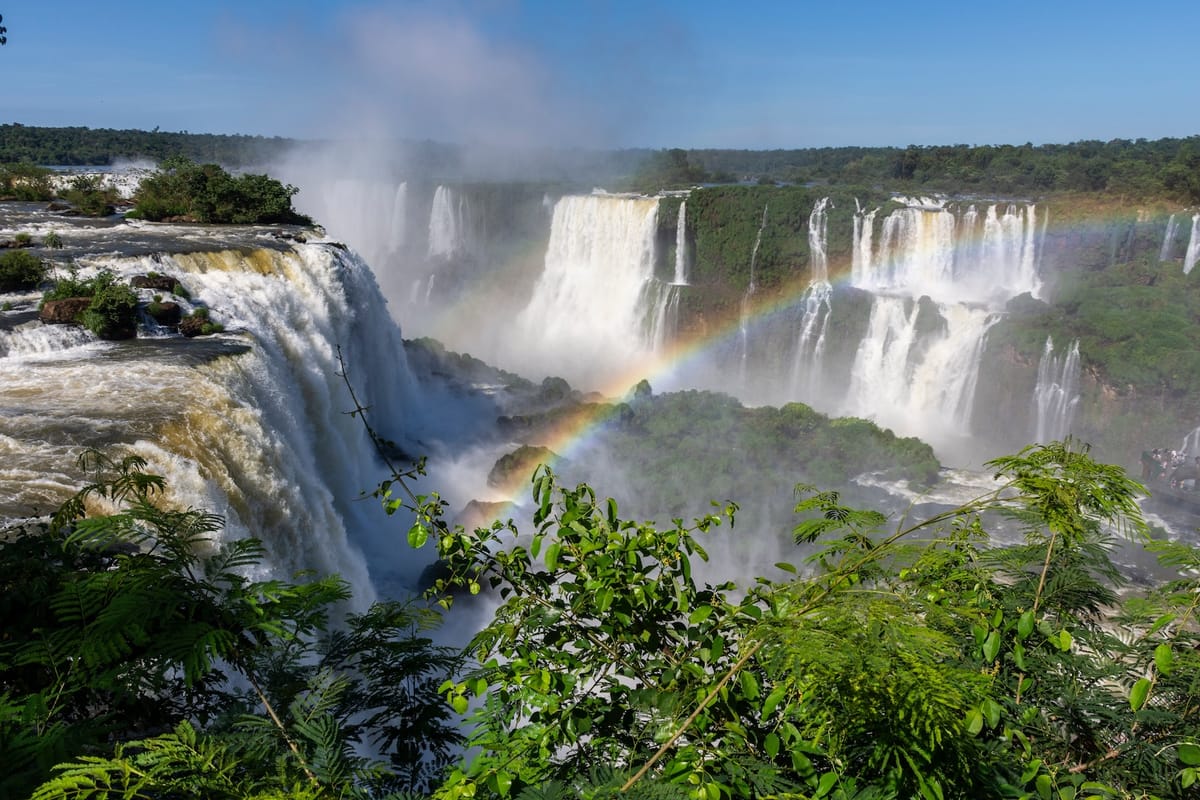

Introduction to Iguazú Falls
Iguazú Falls, one of the world's most spectacular waterfalls, is located on the border of Argentina and Brazil. The falls consist of over 275 individual cascades, with the majority of the waterfalls found on the Argentinian side. This natural wonder is a must-visit destination for any traveler to South America.
Entrance Fees and Accessibility
Visiting Iguazú Falls involves separate entrance fees for the Argentinian and Brazilian sides. On the Argentinian side, the entrance fee is $24 for adults, with children under 16 paying $12 and children under 6 entering free. The Brazilian side charges $20 for adults, with children under 6 entering free. Both sides accept cash and card payments. Notably, individuals with disabilities and their accompanying person can enter free of charge. The paths on both sides are well-paved and accessible by wheelchair.
Exploring the Argentinian Side
The Argentinian side of Iguazú Falls offers a more extensive and immersive experience. A full day is recommended to explore the various trails and attractions. The Upper Circuit, also known as the Paseo Superior, is a 1,750-meter path that takes you over the top of the falls. This circuit is completely flat and accessible, providing breathtaking views as you walk along metal grate catwalks built on the edge of the falls. The Lower Circuit offers a different perspective, allowing you to see the falls from below. Additionally, you can take a speedboat to get up close to the falls or ride the train to various viewpoints.
Exploring the Brazilian Side
The Brazilian side of Iguazú Falls provides a panoramic view of the entire waterfall system. This side can be explored in less than four hours, making it a feasible day trip. The Brazilian side offers fewer trails but compensates with stunning vistas that capture the full majesty of the falls. It is also possible to see the falls lit by the full moon if you visit during the right time.
Border Crossing
Crossing the border between Argentina and Brazil requires careful planning. The main border crossing is located in the town of Puerto Iguazu. When traveling by car, you will need to stop at immigration kiosks to process your documents. For those using public transportation, buses will stop at both Argentine and Brazilian immigration checkpoints. It is crucial to inform the bus driver if you need to exit the bus for Brazilian immigration, as local buses do not stop for this purpose. Private transfers are also available and can streamline the process by guiding you through passport control and arranging the timing of your visit.
Logistics and Tips
Visiting Iguazú Falls involves some logistical considerations. Ensure you have the necessary visas, especially if your nationality requires one for Brazil. As of January 2024, Americans will need a visa to enter Brazil. Local currencies, Argentine pesos and Brazilian reales, can be obtained in towns or at some hotels. It is advisable to spend at least two days at Iguazú Falls to fully appreciate the beauty and scope of this natural wonder.
Memorable Experience
Iguazú Falls is an unforgettable experience that offers something for every kind of traveler. With its stunning natural beauty, accessible trails, and the opportunity to explore two different countries, it is a destination that should not be missed.
Dues are $12 per year. Member benefits:
✅ Ad-Free Website Viewing
✅ Advocacy for Republican Seniors
✅ 120+ Senior Discounts
✅ Member Only Newsletters